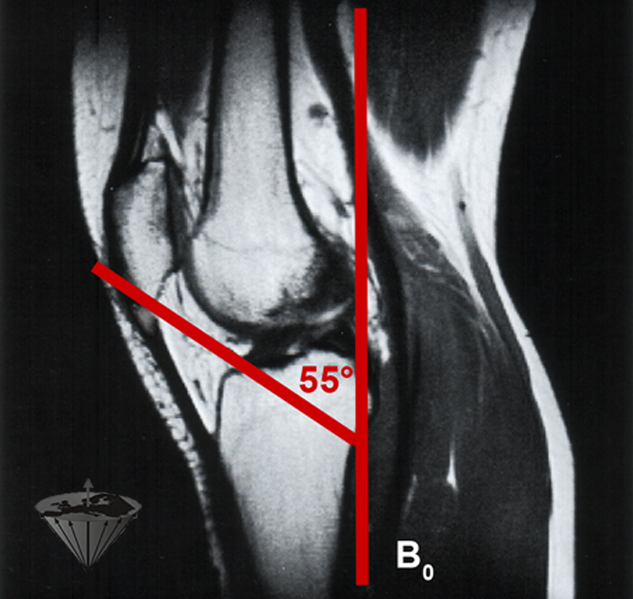





 he magic angle artifact is not an artifact but a true electrophysiological phenomenon created by dipole coupling, similar to the quadrupolar dips described in Chapter 4.
he magic angle artifact is not an artifact but a true electrophysiological phenomenon created by dipole coupling, similar to the quadrupolar dips described in Chapter 4.
The magic angle is a precisely defined angle of approximately 54.7° (in most publications rounded to 55°) to a strong external magnetic field at which two nuclei with a dipolar coupling vector have zero dipolar coupling. This phenomenon is applied in solid-state NMR spectroscopy as the magic angle spinning technique to remove or reduce dipolar couplings and thus increasing spectral resolution [⇒ Berendsen 1962].
When tendons in an MR imaging equipment are aligned at an angle of 54.7° relative to B₀, the dipole coupling descends to zero. This was first reported in 1985 by Fullerton and colleagues [⇒ Fullerton 1985]; they described an increase in T2 of the achilles tendon from 0.6 to 22 ms.
The effect produces bright spots in collagen fibers of tendons, ligaments, peripheral nerves and other tissues which may lead to false-positive results in musculo-skeletal MR studies [⇒ Peto 1990, ⇒ Fullerton 2007].
Using different pulse sequence parameters or changing the patient's position and repeating the examination can help distinguishing a magic angle effect from pathological changes (Figure 17-19).

Figure 17-19:
Black patellar tendon aligned — more or less — parallel to B₀ due to short T2/T2* with a bright lesion in the tendon just below the patella. This small bright area is not a magic angle effect (or “artifact”), but a chronic degeneration of the tendon (tendinosis).